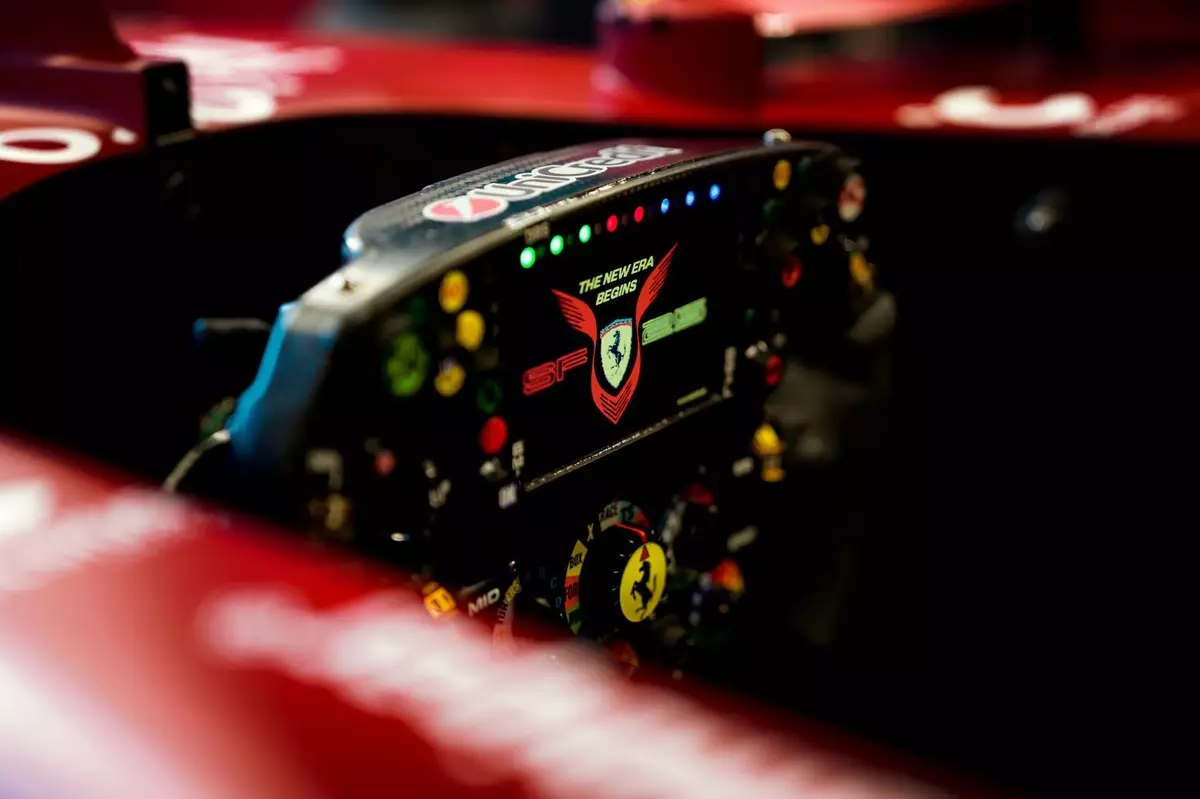Lewis Hamilton’s transition from Mercedes to Ferrari has brought excitement not only to the driver but also to fans and analysts eager to see how one of the sport’s most accomplished talents adapts. As Hamilton embarks on this new journey with the Italian racing giant, the groundwork has already been laid for a fruitful relationship, despite initial hurdles during the Australian and Chinese Grand Prix weekends. These challenges do not overshadow the milestones achieved, particularly Hamilton’s impressive sprint pole and victory in Shanghai. In a sport where every detail counts, Ferrari’s strategy to customize Hamilton’s experience is indicative of their commitment to making this partnership work.
The Challenge of Adaptation
Hamilton has acknowledged the distinct philosophy employed in the design and performance of the 2025 Ferrari compared to the renowned Silver Arrows he dominated so effectively for over a decade. For Hamilton, shifting from one racing culture to another means more than just adjusting his driving style—it’s about retraining the muscle memory ingrained from years behind the wheel of a significantly different vehicle. The nuances of throttle response, braking configuration, and steering feedback are paramount; making even small changes can significantly influence performance, especially at the razor-thin margins that define elite racing.
A Customized Driving Experience
Rapid adaptation is essential in Formula 1, and Ferrari has taken note of Hamilton’s preferences, making several significant adjustments to his steering wheel. It’s a move that reflects an understanding that success stems not only from raw speed but also from creating an interface that complements a driver’s instincts. Personalization has crept into the race car’s cockpit, as Ferrari incorporates a welcome message to Hamilton on his steering wheel’s launch screen—a seemingly small touch that symbolizes a larger commitment to making him feel at home.
Importantly, these changes extend beyond mere aesthetics. Ferrari has designed components to maximize ergonomics, including a new clutch and gear lever that cater specifically to Hamilton’s strengths. The integration of software tweaks to shift data presentation closer to what Hamilton experienced at Mercedes is equally key. Carrying over the elements that worked for him can pave the way for quick acclimatization, thereby allowing him to channel his competitive edge more effectively.
Data Display and Functionality
At the heart of Hamilton’s customization is an intricate data display on his steering wheel. While his teammate Charles Leclerc might prefer a simplified interface, Hamilton’s steering setup reflects a comprehensive approach that includes metrics from battery state to engine mappings. For a driver so accustomed to finely-tuned feedback, this detailed presentation provides critical information that harnesses the power unit’s potential.
Traditional versus modern engineering philosophies come into play here as well. Mercedes typically streamlined controls to reduce clutter, while Ferrari’s varied settings allow for greater flexibility but add complexity. Hamilton’s design choice mirrors his experienced yet aggressive style, wanting the data that keeps him informed without sacrificing the immediacy of decision-making during races. The knowledge that he can quickly access multiple engine and hybrid management settings minimizes uncertainty and empowers him to make instantaneous decisions when every millisecond counts.
Gearing Up for Performance
A notable distinction between the two teams‘ strategies further underscores the gap Hamilton must navigate. Mercedes favored a simpler interface with fewer dials, where the „STRAT“ knob concentrated control in a singular focus. Ferrari, conversely, differentiates multiple driving modes, which aligns with Hamilton’s request for quick access to vital race strategies. This flexibility ensures he can respond adeptly to varying race conditions while minimizing potential distractions.
It becomes evident that these enhancements might not dramatically change the performance of the SF-25, but they could significantly impact Hamilton’s confidence and intuition behind the wheel. In racing, feeling synchronized with the car is critical; it’s not just about driving fast but driving with precision. As Hamilton settles into this customized environment, fans can only watch with bated breath to see how quickly he finds his rhythm in a new but familiar setting.
A Collegiate Future?
With all these changes, Hamilton’s transition to Ferrari represents more than just a switch in teams; it illustrates a broader philosophy about innovation driven by personalization. Whether these adaptations will lead to a championship-winning formula remains to be seen, but one thing is clear: Ferrari is investing resources into colonizing a competitive advantage through tailored details. Such efforts reflect the increasing importance of understanding drivers as individual athletes, each with their own unique preferences and styles. In a world where technology continues to evolve, blending human instinct with advanced racing strategies promises to redefine the competitive landscape of Formula 1.


Napsat komentář